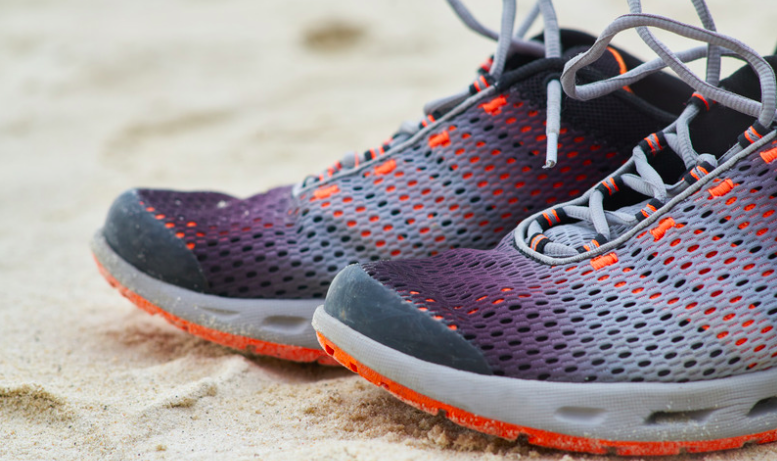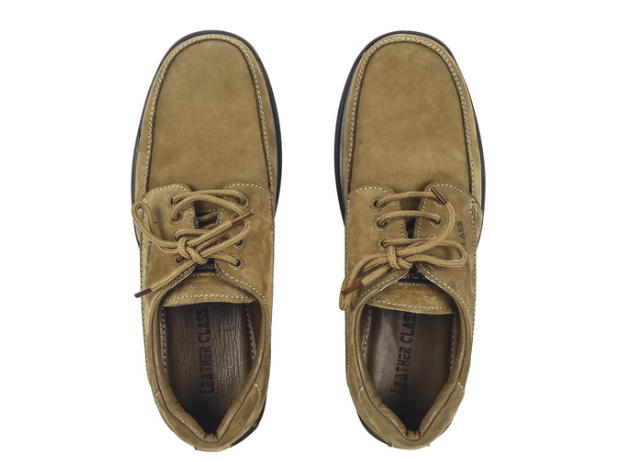For the majority of our lives we take it for granted that once we stand straight on our two feet, we’ll stay that way. But once we turn 60 keeping our balance is not a sure thing any more. Each year about 30 % of older Americans take a tumble – and the risk of falling increases significantly in our 80s and 90s.
Luckily, most of these falls produce only insignificant scratches and bruises. They do make us frightened of falling again, though. We hear stories of our friends sustaining injuries (hip fractures, especially), which can lead to a disability.
According to CDC, in 2010, 2.3 million fall injuries sent older people to emergency rooms, 662,000 people required hospitalizations and falls cost $30 billion in direct medical costs. So it’s only logical that you want to do whatever is in your power to prevent falling. And sometimes it can be as simple as choosing the right footwear!

When selecting a shoe to improve balance, remember these simple tips:
1. Put shoes to the 1-2-3 test.
Step 1: Press on each side of the heel area to make sure that the heel is firm and won’t flop.
Step 2: Bend the shoe upwards to ensure toe mobility. The shoe shouldn’t bend too much in the toe box area, but it shouldn’t be too firm and inflexible, either.
Step 3: Try gently twisting the shoe; it shouldn’t twist in the middle area – that would put your balance at risk.
2. Measure your feet every time.
Let the professionals measure your feet each time you want to purchase new shoes.
Natural aging, health issues or pregnancy can modify the size of your feet. Measure both of your feet (preferably later in the day when they have retained water), and shop for a slightly larger foot size.
3. Adjust your socks.
Bring the type of socks you plan to wear with the shoes along with you to the store and take your time trying the shoes on before buying them.
4. Don’t buy uncomfortable shoes.
If you don’t feel comfortable or steady in the store- DON’T GET THEM. Shoes should feel comfortable and supportive right away; if they don’t feel comfortable right away, breaking them in won’t change things.
5. Personalize your choices.
If you have specific health or foot issues, talk to our podiatrist in Raleigh, Cary, Garner or Holly Springs about the footwear that best suits your needs. If your podiatrist has prescribed orthotics, take them along when you shop and check them together with the shoes you’d like to buy. According to the article “The Role of Podiatry in the Prevention of Falls in Older People” footwear interventions, including shoe insoles and foot orthoses, have the capacity to enhance balance control and gait in older people.

6. The American Podiatric Medical Association helps you choose.
Good quality shoes can be considered an investment. Before you purchase a pair of shoes, make sure that the brand and the style that you’re in view of, have earned the APMA Seal of Acceptance. APMA grants the seals to products, which they believe to promote good foot health.
Foot care specialists in Cary, Raleigh, Garner and Holly Springs
Our podiatrist has many years of experience diagnosing and treating even the most complex foot and ankle conditions for patients of all ages. He works closely with our foot and ankle surgeons to provide patients with conservative treatment options, performing in-office procedures, if necessary.
Find out more about:
David D. Boone, MD – Foot and Ankle Specialist
Kevin J. Logel, MD – Foot and Ankle Specialist
Make an appointment with our podiatrist in Cary, Raleigh, Holly Springs or Garner today, to get specialized treatment with a personal approach.
Source: https://www.apma.org/Patients/HealthyFeetTips.cfm?ItemNumber=10050
The material contained on this site is for informational purposes only and DOES NOT CONSTITUTE THE PROVIDING OF MEDICAL ADVICE, and is not intended to be a substitute for independent professional medical judgment, advice, diagnosis, or treatment. Always seek the advice of your physician or other qualified healthcare provider with any questions or concerns you may have regarding your health.